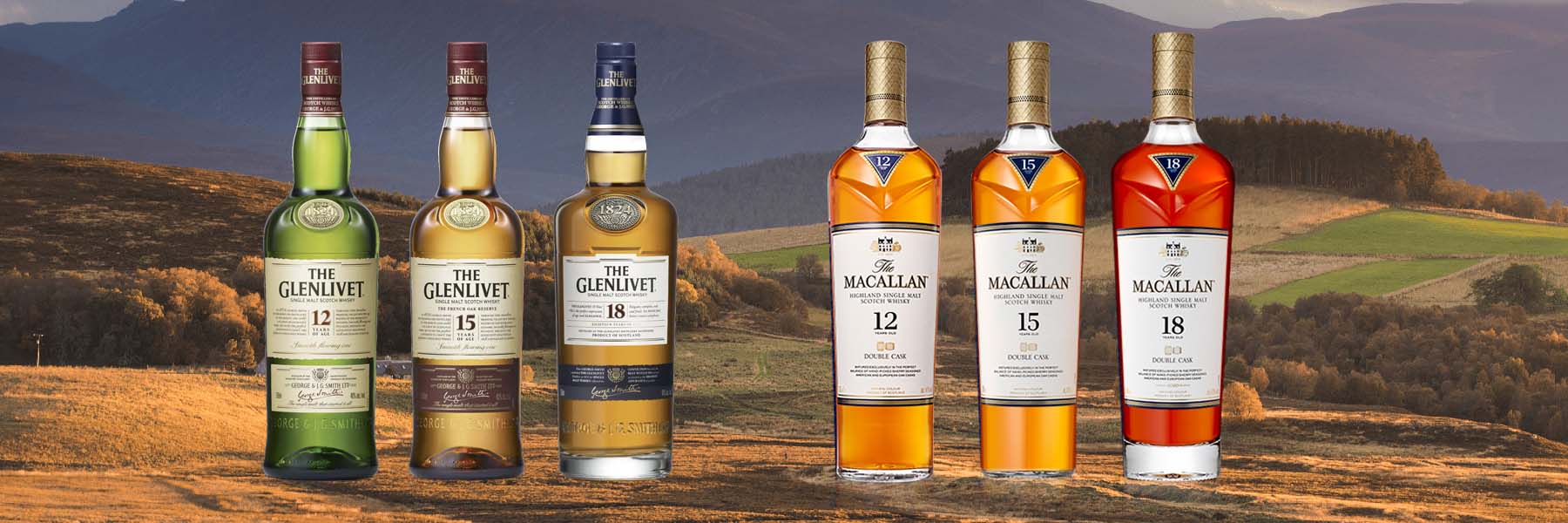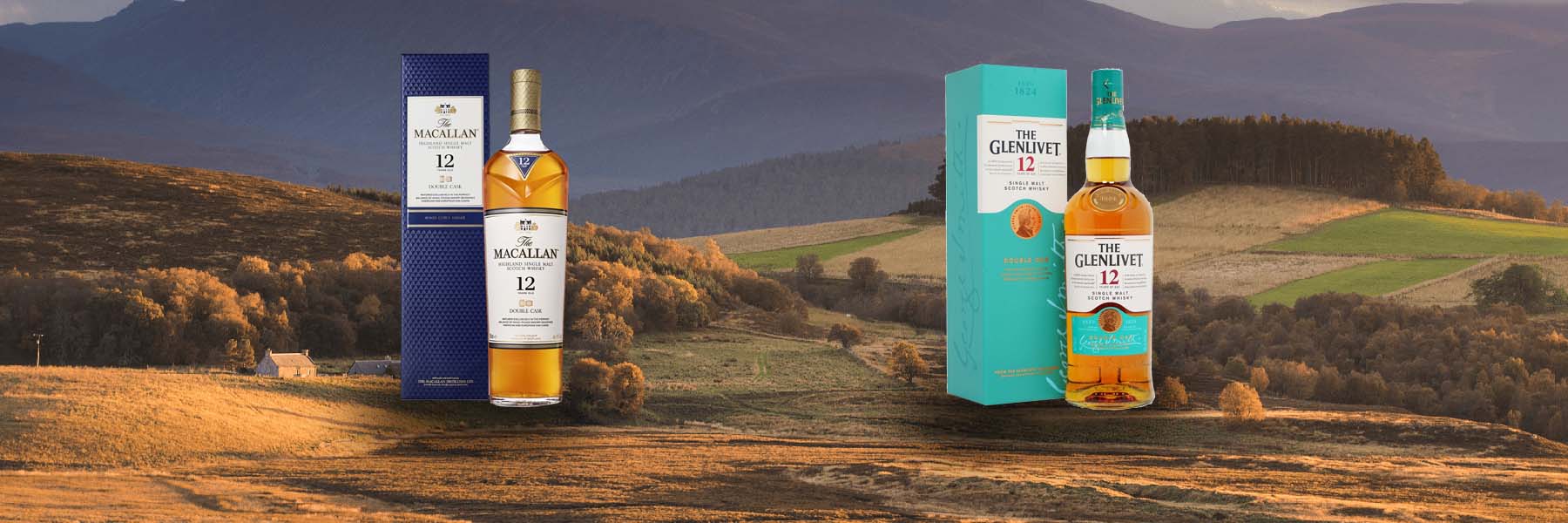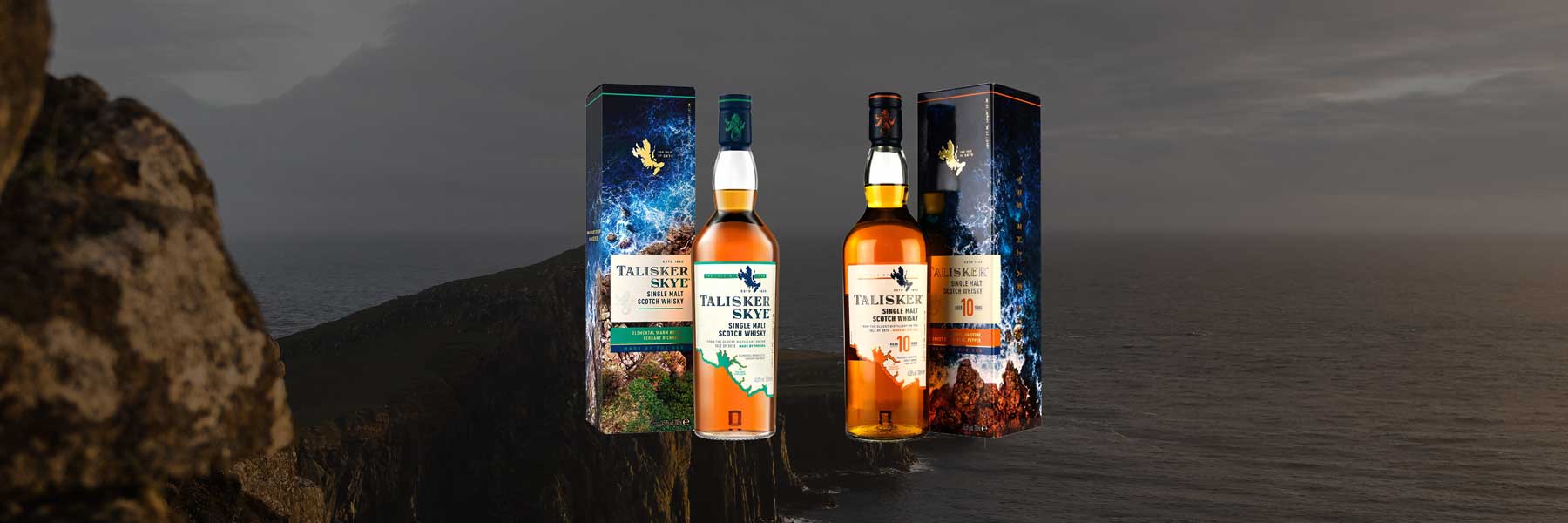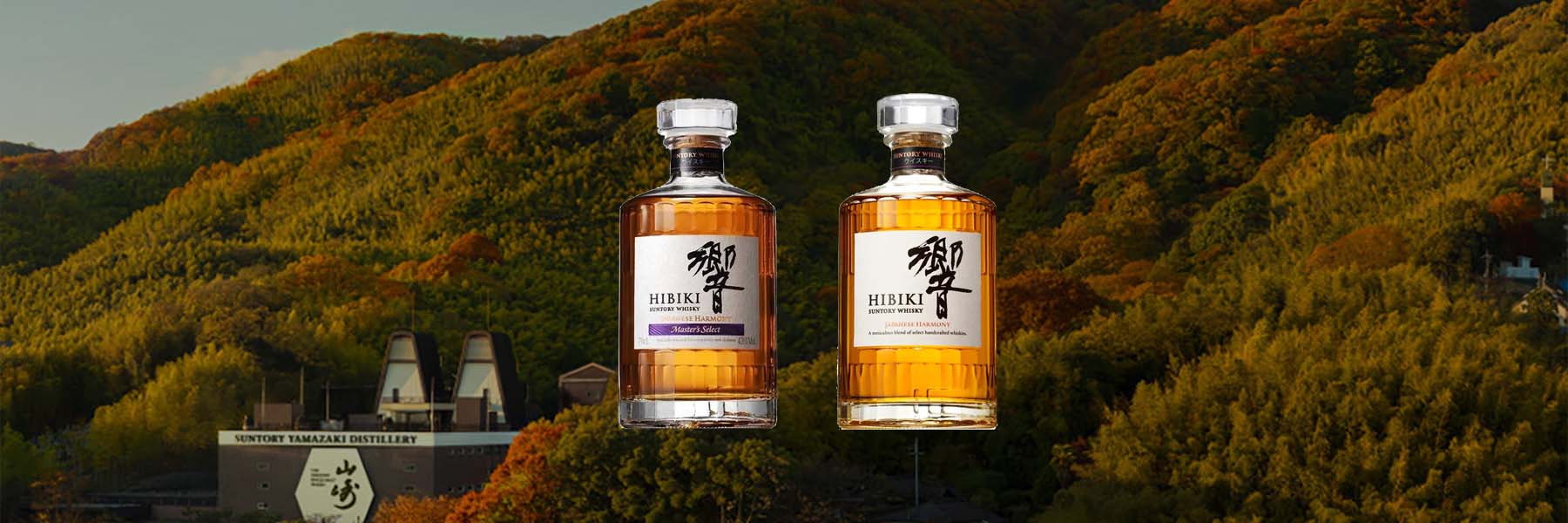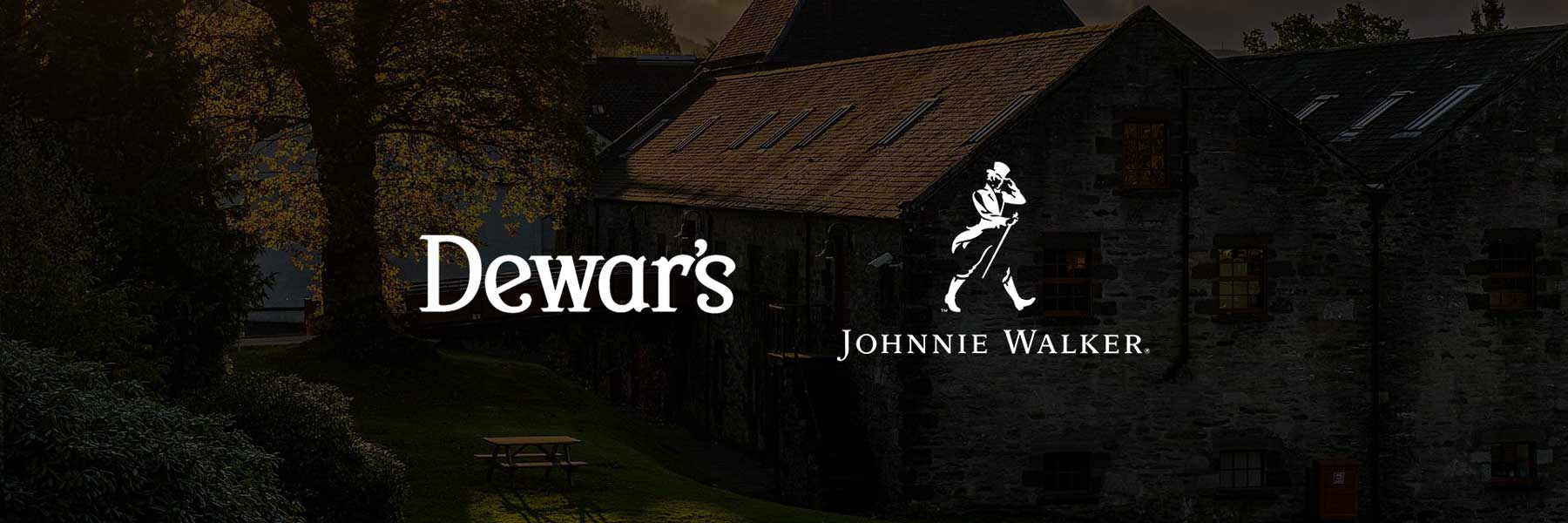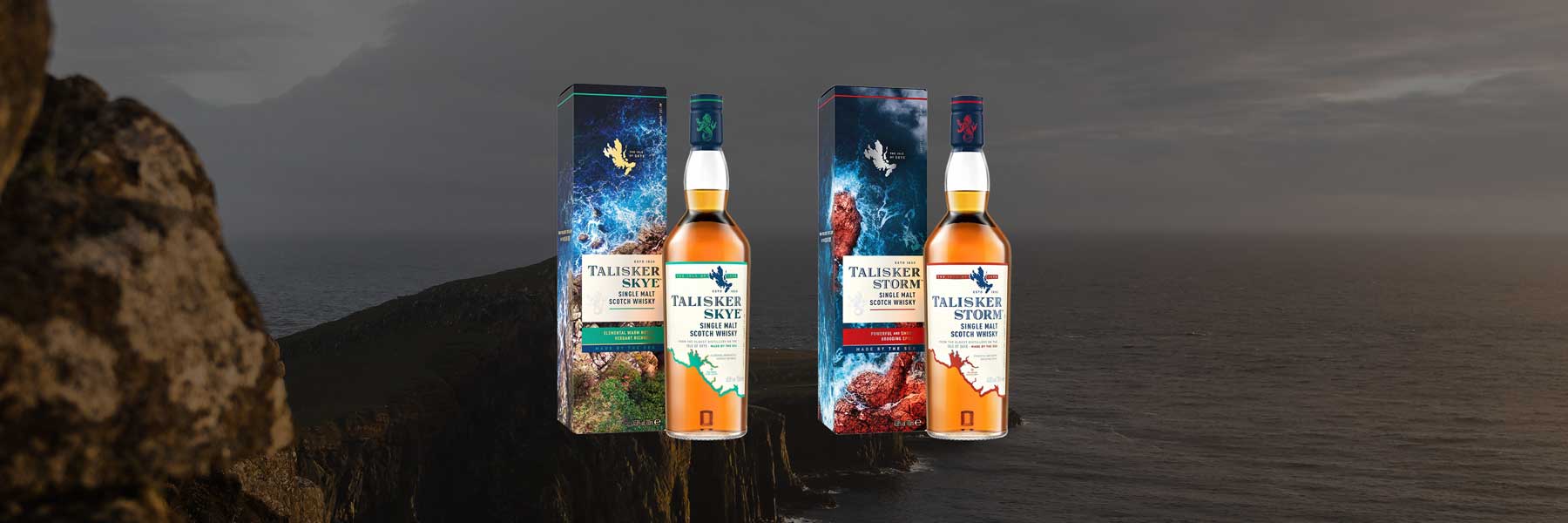Macallan vs Glenlivet | Which one is the best?
Macallan and Glenlivet are two single-malt whiskies with mass appeal. Both hailing from the same coveted Speyside region, each distillery is steeped in rich history, producing iconic whiskies which are avidly enjoyed around the world.
However, despite being located just 11 miles away from each other, these two distilleries couldn’t be further apart in terms of style. As famous and alluring as both these whiskies are, choosing between Macallan vs Glenlivet takes a little understanding.
To help you make the best decision, this post outlines these whiskies’ differences in terms of distillery character, flavour, style and price.
Let’s dive in.
Macallan vs Glenlivet: What are the main differences?
Both Macallan and Glenlivet are single-malt Speyside scotches, but their distinctions and flavour profiles couldn’t be more different. Here’s an overview.
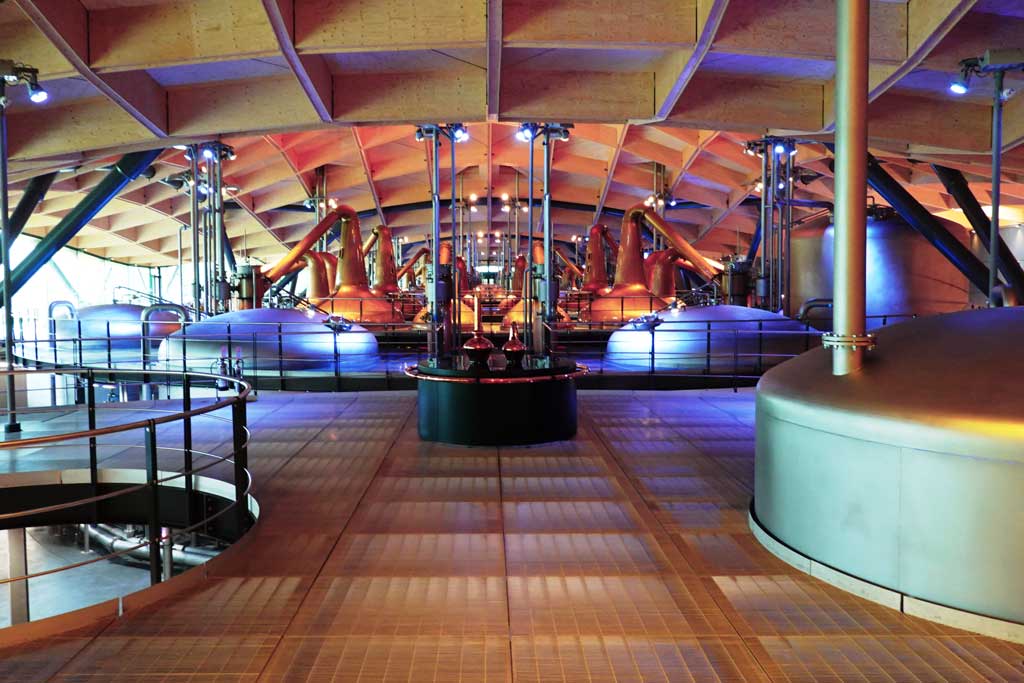
The Macallan
Since their beginning, Macallan was renowned for their Oloroso oak sherry cask matured whiskies. For many years this was their signature maturation style, delivering flavours of sweet dried fruit, oak and spice. In more recent years, Macallan branched out into additional product lines, utilising both new American oak and ex-bourbon casks in addition to their mainstay sherry ones. Their impressive arsenal of 7 core lines currently includes;
- Sherry Oak (Oloroso sherry seasoned oak casks)
- Double Cask (American Oak & Oloroso sherry seasoned oak casks)
- Triple Cask (American Oak, Oloroso sherry seasoned oak casks & ex-bourbon casks.)
- Rare Cask (Oloroso sherry seasoned oak casks)
- Estate (Made with annual, single-crop, Macallan estate-grown barley called Minstrel)
- M collection A celebration of Macallan’s ‘six pillars’ of whisky making
- Quest collection A quartet of whiskies exploring global flavours.
Today, Macallan offer a wide variety of single malts from their various core series’, ranging from 10, 12, 15, 18, 25, 30 and 40-year-old expressions, some of which include cask strength iterations.
Natural colour
Macallan’s whiskies have a truly stunning pallete of colours, ranging from light oak to darkest mahogany. Never artificial, they’re entirely natural and derived from the spirit interacting with their carefully selected maturation casks. Unlike artificially coloured whiskies which tend to lose their vibrancy over time when exposed to sunlight, these natural hues do not diminish – a testament of skill demonstrated by The Macallan’s Master Whisky Maker in order to maintain consistency throughout each batch they produce.
Chill filtered
Despite the controversy this process often receives, Macallan opt to chill-filter their whiskies. This process helps prevent any potential for cloudiness within the spirit, either at low temperatures or if you like to drink your whisky ‘on the rocks’.
Distillery character
As part of their ‘six pillars’ of whisky making, Macallan has a distinct set of rules by which they unwaveringly operate. Accompanying their dedication to exceptional cask maturation, one of the most fascinating elements of their making process is their affectionately titled “curiously small stills”.
At only 12 feet tall, these abnormally stout spirit stills are some of the smallest in the Scottish whisky industry. Fitted with steep-sloping lyne arms, they produce a distinctly ‘heavy’ new make spirit which the distillery intentionally replicated when they built their new state-of-the-art distillery.
This unusual size of spirit still maximises copper contact within, yielding a dense and rich distillate that’s unique to the Macallan style. This full-bodied spirit is what allows Macallan to mature their whiskies for so long in a variety of carefully selected cask types.
Overall Macallan style
Contrary to the usual Speyside style, Macallan makes rich, full-bodied whiskies with an oily mouthfeel. Thanks to their signature sherry cask maturation, their spirits are usually fruity, oaky, earthy and deliver a smooth drinking experience.
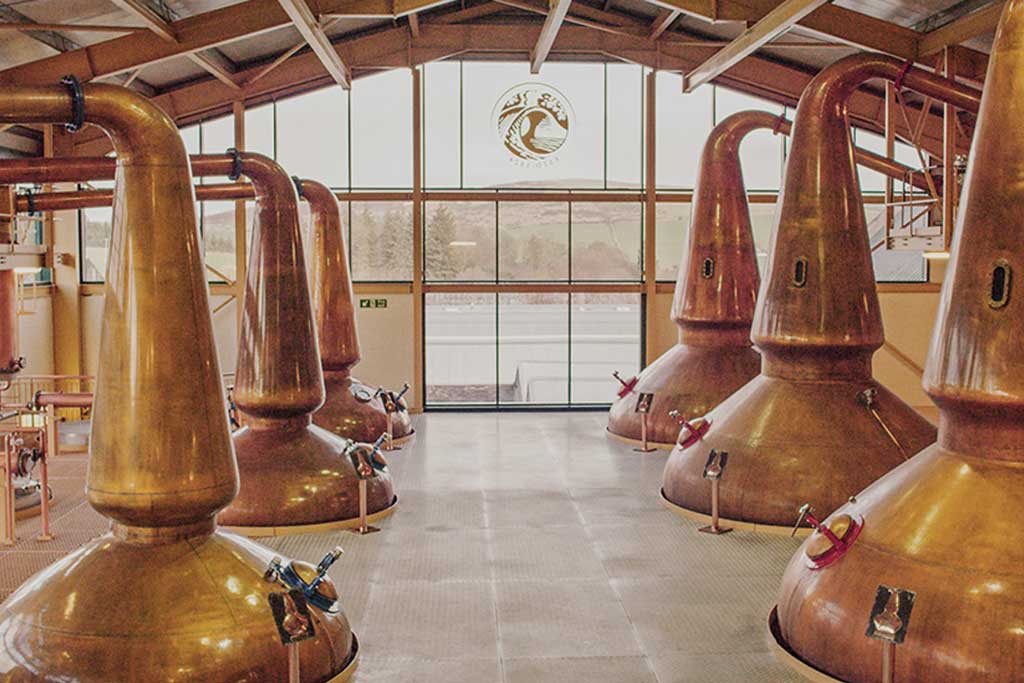
The Glenlivet
As the first legal distillery in the Speyside region, The Glenlivet has been making whisky in Ballindalloch for 200 years. Often assimilated as a typical Speyside representation, Glenlivet’s spirits are much lighter, fruitier and more floral than those produced by Macallan. Their current collection of whiskies consists of three main categories;
- Heritage collection
- Limited releases
- Distillery exclusives
- Cellar collection
The heritage collection hosts their 12, 15 and 18 year old single malt expressions which are accompanied by three NAS (no age statement) whiskies titled; Founders Reserve, Caribbean Reserve and Captain’s Reserve.
The limited releases collection contains their 12 year old ‘Illicit Still’ whisky. This non-chill filtered expression pays homage to the original methods used by their founder George Smith. This whisky is matured in American and European oak casks for 12 years with fruity, floral, sweet and tropical flavours.
The Distillery Exclusives collection primarily comprises of single-cask whiskies. Ranging in age between 8, 10, 12, 14, 15, and 22 years old, these expressions are predominantly high ABV% which have been aged in a variety of casks such as first and second-fill European sherry casks.
The Cellar Collection contains two of Glenivet’s oldest expressions which are offered in 30 or 33-year-old iterations. These limited edition whiskies are only available via their distillery shop which have been released in limited batches of less than 250 bottles.
Colouring & Filtering
Unlike Macallan, Glenlivet add caramel colouring (E150a) to their whiskies. This lets them control the colour of their whiskies to maintain consistency. Both in the industry and the market, this practice is deemed somewhat controversial and for some discerning whisky fans, may be off-putting.
As with many other Scottish single malts, Glenlivet also use chill-filtering with the majority of their whiskies. (Excluding their 12 year old Illicit still expression.) This is to deter any cloudiness within their spirits, especially at low temperatures or if ice is added. (Macallan use this filtration method too.)
Distillery character
Since the closure of their own floor maltings in 1966, The Glenlivet distillery now sources their grain from Crisp Maltings in Portgordon. Unpeated, their barley is taken through milling, mashing and fermentation before distillation.
By comparison to Macallan, Glenlivet’s stills are much taller with a characteristic lantern shape. In the mid-region of the still, there’s a truncation where the still noticeably narrows. This rather abrupt feature is intended to maximise copper contact and encourage reflux – where alcoholic vapours recondense and drop back down into the low wines being heated within.
Unlike the remarkably stout Macallan stills, Glenlivet’s stills only allow the lightest of vapours to reach the top. In terms of distillery character, this produces a much more delicate, floral new make spirit which is notably less full-bodied than Macallan’s.
Overall Glenlivet style
Glenlivet has a fruity character, comprising a light-bodied spirit which packs floral notes with tropical tones of pineapple and mango. Compared to Macallan, Glenlivet is a much more delicate style which follows the more usual Speyside flavour profile of vanilla, esters and sweet fruits.
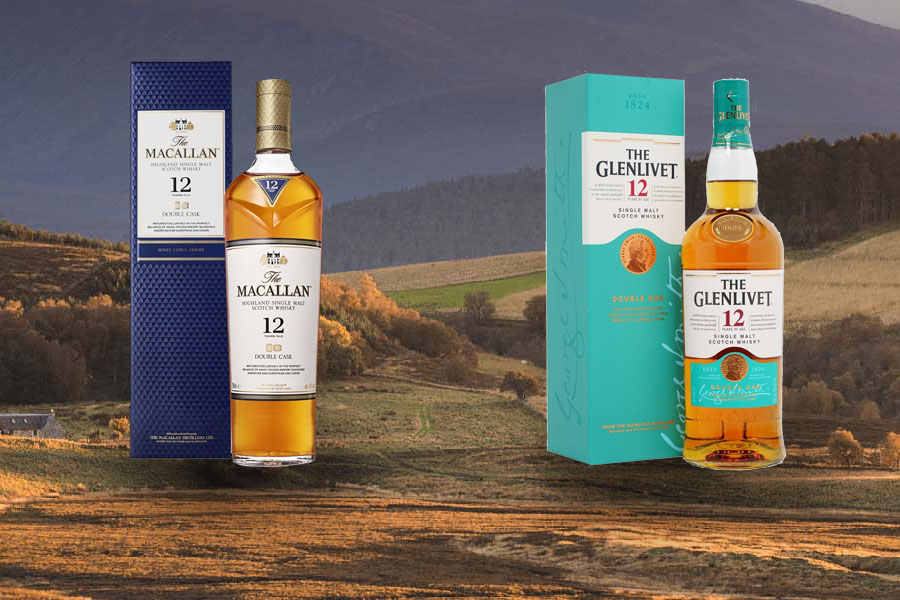
Macallan vs Glenlivet 12
Macallan and Glenlivet both have multiple 12 year old expressions. To keep things simple, we’ll compare the Macallan double cask 12 year old vs the Glenlivet 12 year old. As we’re comparing the two brands here’s an overview of what’s available;
| Macallan | Glenlivet | |
| Bottle | Double cask 12 year old | 12 year old |
| Colour | Harvest sun. | Bright, vibrant gold. |
| Nose | Creamy butterscotch, with a hint of toffee apple, candied orange, vanilla custard and newly felled oak. | Fruity & summery. |
| Palate | Deliciously honeyed wood spices and citrus balanced with raisins & caramel. | Well-balanced & fruity with strong pineapple notes. |
| Finish | Lingering oak, warm, sweet & dry. | Long, creamy and smooth. |
| Rating | 8/10 | 9/10 |
| Age | 12 yo | 12 yo |
| Region | Speyside | Speyside |
| ABV | 40% | 40% |
| Classification | Single Malt | Single Malt |
| Cask | American oak + sherry | Oak + American oak |
| Chill filtered | Yes | Yes |
| Price (USD/GBP) | £69 / $85 | £38 / $47 |
Macallan 12 and Glenlivet 12 are two of the most popular core whiskies from their respective distilleries. Macallan is known for its rich, full bodied flavour, while Glenlivet is known for its smoothness and light fruity notes.
Macallan 12 double cask is first aged in American oak casks then in sherry matured casks before bottling. This results in a whisky with a beautiful amber colour with complex aromas of creamy butterscotch, toffee apple, dried fruits and and oak. The palate has notes of deliciously honeyed wood spices and citrus balanced with raisins & caramel
Glenlivet 12 is first aged in traditional oak casks then in American oak casks before bottling. This results in a whisky with a bright golden hue with delicate aromas of honeycomb, ripe peach and freshly cut grass. The palate has notes of vanilla and tropical pineapple that linger on the finish.
When it comes to taste comparison between Macallan 12 and Glenlivet 12 whiskies, Macallan offers more intense flavours with an extra layer of richness due to the fuller-bodied spirit. While Glenlivet tends to have lighter, fruity flavours that can be enjoyed by those who prefer a lighter style whisky. Both Macallan 12 and Glenlivet 12 are excellent choices for sipping neat or using as a base for creative cocktails.
Comparing 18 year old, double cask Macallan vs Glenlivet 18 years old.
| Macallan | Glenlivet | |
| Bottle | 18 year old, double cask | 18 year old |
| Colour | Amber honey | Old gold, apricot |
| Nose | Dried fruit, ginger and toffee. Rich orange with hints of clove and nutmeg | Rich fruit, toffee |
| Palate | Rich raisin and sultana with notes of caramel, vanilla and ginger, balanced by wood spice and zesty citrus | Ripe citrus, winter spice |
| Finish | Warm oak spice with ginger, turning to sweet orange | Long, with raisins and spice |
| Rating | 9/10 | 8.7/10 |
| Age | 18 yo | 18 yo |
| Region | Speyside | Speyside |
| ABV | 43% | 40% |
| Classification | Single malt | Single malt |
| Cask | American oak + sherry | 1st & 2nd fill American oak + ex-sherry oak |
| Chill Filtered | Yes | Yes |
| Price | $347/£280 | $102/£84 |
Macallan 18 double cask has been matured in a combination of American oak and sherry casks for a minimum of eighteen years. It is bottled at 43% ABV and has a natural colouring. On the nose, it has notes of dried fruits, honey, toffee and orange peel. The palate is rich and complex with flavours of sherry sweetness, cinnamon spice, dried figs and hints of nutmeg. The finish is long and lingering with notes of vanilla cream, lemon zest and white pepper spice.
Glenlivet 18 has been aged in 1st and 2nd-fill American oak casks as well as ex-sherry oak casks for a minimum of eighteen years and bottled at 43% ABV. It has a natural pale golden colour reminiscent of apricot. On the nose, it offers delicate notes of rich fruit, toffee and freshly cut grass. The palate is medium-bodied and smooth with flavours of sweet malt, orang and lemon. There are also hints of cinnamon spice, toasted oak and dried fruits that linger on the finish.
FAQ’s About Macallan vs Glenlivet
Does Macallan own Glenlivet?
No, Glenlivet is owned by French alcoholic beverages company Pernod Ricard. Commercially, the two distilleries have no involvement with each other as they’re both owned by seperate conglomorates.
Is Macallan scotch top shelf?
Yes Macallan is known for its high-end single malt whiskies. Known as the ‘Rolls Royce’ of Scotch whisky, their coveted whiskies are rated very highly and command a heavy premium in the whisky world. As one of the oldest and most esteemed Speyside distilleries, their spirits are consistently amongst the top 5 Scottish whisky brands.
Why is Macallan so special?
Among the abundant whisky brands of Scotland’s Highlands, Macallan reigns supreme as the consistent purveyor of top-notch single malts. Speyside is renowned for its exquisite whiskies, yet it was Macallan who pioneered and popularized the concept long before it became a trend.
Why is Macallan so costly?
As with any premium whisky, the age, quality and scarcity of Macallan’s whiskies drive demand. With the supply being limited, this therefore drives the prices up. The older and rarer the whisky, the more costly it will be. As a renowned Speyside whisky distillery and international brand, Macallan are famous for making top-quality whisky.
Why is Glenlivet so popular?
Glenlivet is the oldest and most famous distillery in the parish of Glenlivet, located by the river Livet in the Speyside region of Scotland. Today, Glenlivet has a reputation as being one of the smoothest and most delightful scotches available worldwide. Their complex but accessible fruity flavours make Glenlivet’s whiskies a firm favourite for connoisseurs with excellent value for money.
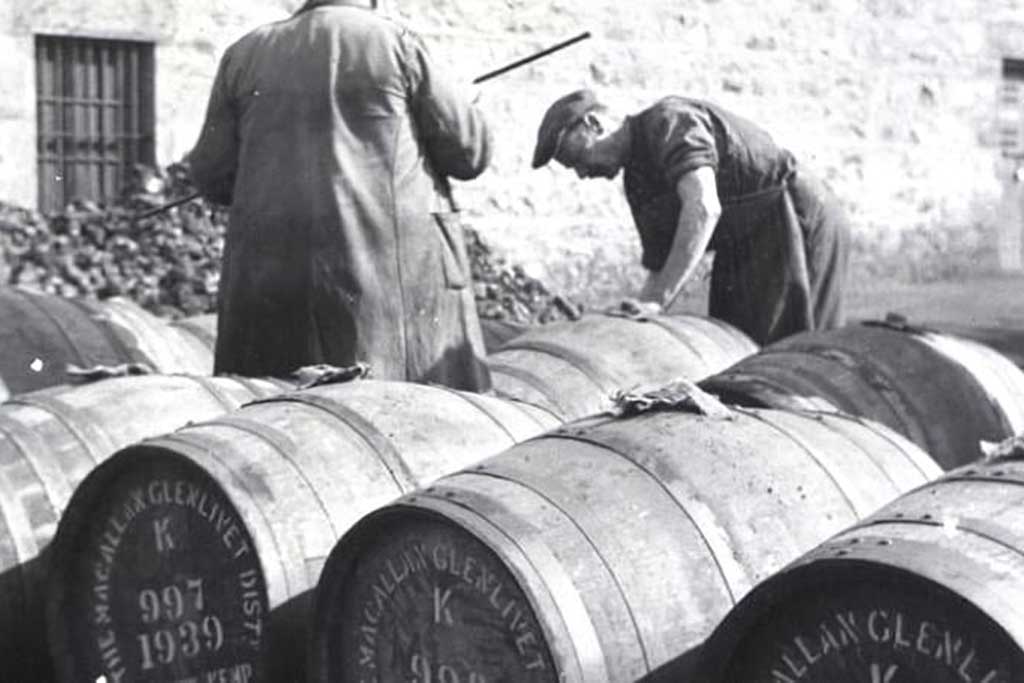
Macallan vs Glenlivet: Historic Rivals
Whether you’re a whisky buff or just getting started, 1824 was an important year in history for The Macallan and The Glenlivet. It was the year they both began making their whiskies…legally.
In case you didn’t know, Scotland legalised whisky distilling in 1823 with the passing of the Excise Act. Not only did this generate handsome taxes, but this bill brought an end to a centuries-old practice of illicit whisky distillation marking the dawn of the Scottish whisky industry.
Swiftly following the Excise Act, some of the country’s first legal distilleries were founded in the north-eastern region of Speyside. In 1824, Glenlivet’s founder George Smith applied for the first-ever license to begin producing his high-quality whiskies. Closely afterwards, the Macallan Estate too got its licence and began producing its first batches of whisky.
Encouraged by George Smith’s success, it wasn’t long before other illicit distillers began opening their own legitimate distilleries, also operating under the Glenlivet name. Soon, a new problem arose in this increasingly competitive area. This took the form of a three-letter word; THE.
Because so many distilleries were situated near the river Livet, many of them adopted the term in their branding. For the forward-thinking George Smith, he couldn’t risk other brands coat-tailing the reputation he’d built with his burgeoning whisky. In fact, the name “Glenlivet” became so popular that the Macallan distillery even created a scotch under the name “Macallan-Glenlivet”, despite no affiliation between the two distilleries.
After years of dispute, Smith finally engaged his competitors in court – including Macallan. After a legal battle, an agreement was put in place that granted Smith the all-important trading name ‘THE Glenlivet’. Other distilleries in the area weren’t permitted to use this term unless it was used in secondary conjunction with their name. An existing example of this is Tomintoul and their ‘Speyside Glenlivet’ whisky.
As the years have passed, Macallan and Glenlivet have been joined by another 60 distilleries within Speyside. If you’re still reading this, you’ll now have a better idea of the scale of Speyside whisky production. This is why it’s considered its own region within the highlands, simply due to the sheer concentration of distilleries that reside near the Spey river.
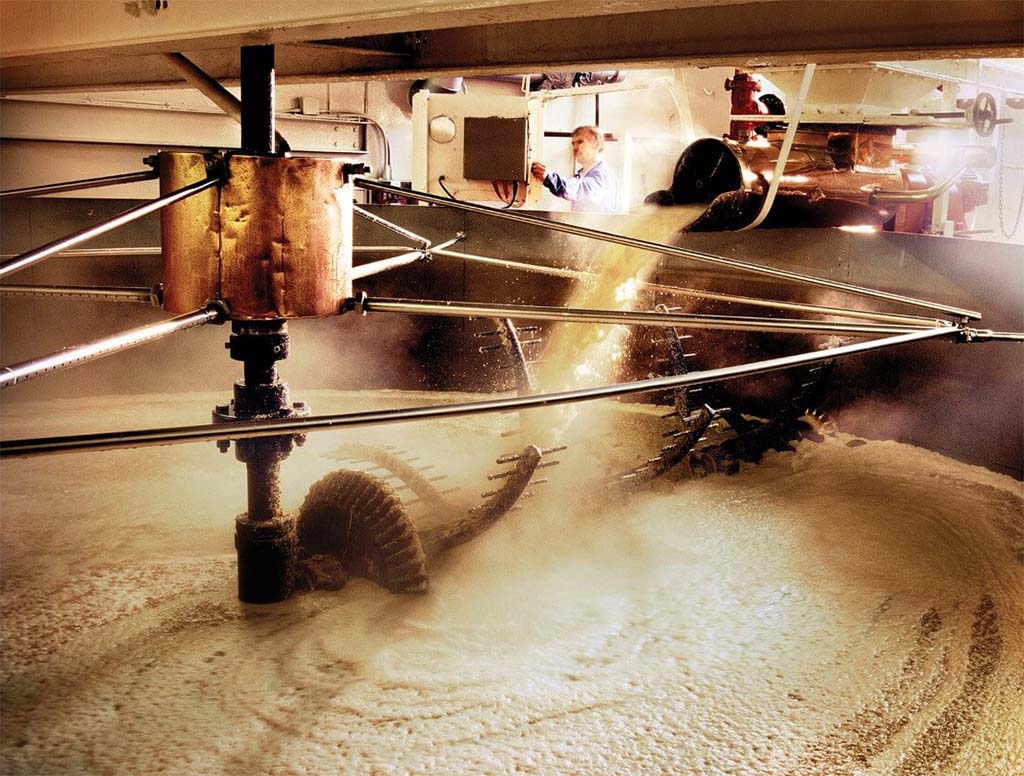
How single malt Scotch is made
The process of making whisky is relitively simple, but contains multiple steps which sequentially affect the next. In essence, the process involves making a basic type of beer from which the alcohol is extracted and refined via boiling in large copper pots. To get a better understanding of how whisky distillation works, check out the sequence below.
To make single malt Scotch whisky, it must adhere to the strict laws set in place that dictate that the spirit be;
- Made in Scotland
- By a single distillery
- Using only malted barley, water and yeast
- Be a minimum of 40% (80 proof)
- Matured in casks for at least 3 years and 1 day
Getting the grain
To begin the whisky making process, barley is grown, selected and harvested to gather its grains. Essentially acting as seeds, these are raw and unable to make alcohol unless they are taken through a three stage process called malting.
Malting
Malting is either carried out by the distillery itself or by commercial malting plants. Distillery maltings are a dying trade, simply due to the space and time this process required. Regardless, the process is the same, where the barley grain is soaked repeatedly soaked in batches of water. This ‘steeping’ mimics springtime rain which fools the grain into a growth state called germination.
As small rootlets begin to grow, enzymes within the barley convert the grain’s starches into fermentable sugars; a crucial element for the whisky making process. To avoid growing the barely too much, the germination is then halted via heating. This can be done with either neutral hot air, or with heat and smoke from a peat fire. (This is how peated whiskies get their flavour.)
Milling
With the malting process complete, the grain is then crushed into a coarse flour mixture. Collectively known as grist, this mixture contains 20% husk (coarsest) 70% grits and 10 % flour (finest).
Mashing
To extract the oh-so important sugars from the ground up barley, the grist mixture is added to a large tank called a mash tun. Mixed and agitated with batches of hot water, the grist is drained to extract a sugary liquid called wort.
Fermenting
Finally, the alcohol can be made. The sugary wort liquid is transferred to large cylindrical vats made of wood where a small portion of yeast is added. Feeding on the sugars within the wort, the yeast converts them to alcohol over a period ranging between 2-7 days. This process creates beautifully fruity and floral favours in what is now a basic 6-9% ABV beer, typically known as wash.
Distillation
To extract the alcohol from the beer, large quantities of wash are transferred to the romanticised copper pot stills. Also called wash stills, the wash is then slowly heated until it starts to boil.
Becuase alcohol has a lower boiling point than water, the booze evaporates first, becoming vapours which travel up and out the still. These vapours are cooled and recondensed into a stronger alcohol liquid known as low wines – of around 30% ABV.
To refine and strengthen the alcohol further, the low wines are passed to a second, small pot still called a spirit still. Again, the liquid is heated until the alcoholic vapours rise once more out the still. This final distillate is much, much stronger at around 70% ABV. Known as new make spirit, this crystal clear liquid is ready for maturation to become whisky.
Maturation
To be classed as whisky, the new make spirit must be matured in a wooden cask for a minimum of three years and one day. (In case there’s a leap year, if you were wondering!) The type of cask varies, but as we’re talking about Macallan vs Glenlivet, this could be a sherry or ex-bourbon cask.
After distillation, its the cask ageing that gives the whisky a second round of flavours and its beautiful colouration. Between 3 to 60 years, the whisky absorbs the natural flavours of the cask, becoming more balanced, sweet, spicy and even developing topical fruit notes which are truly something to behold.
Marrying
After a minimum of 3 years, the whisky is ready to be assessed. As casks are made from natural material, their inherent whiskies can vary wildly in character. For single malt whiskies, they may be emptied and ‘married’ with other whiskies from other casks in vessels known as ‘marriage tuns’. This allows distilleries to be consistent with their output, by carefully mingling whisky from different casks to create their desired flavour and colour.
Bottling
The married single malt is now ready for bottling. Still at cask strength, this is where it is usually ‘cut’ with water, diluting the spirit down from 70/80% ABV to a minimum of 40%. Using automated or semi-automated bottling machines, the whisky is injected into the new glass bottles, ready for labelling, boxing and distribution for retail sales around the world.
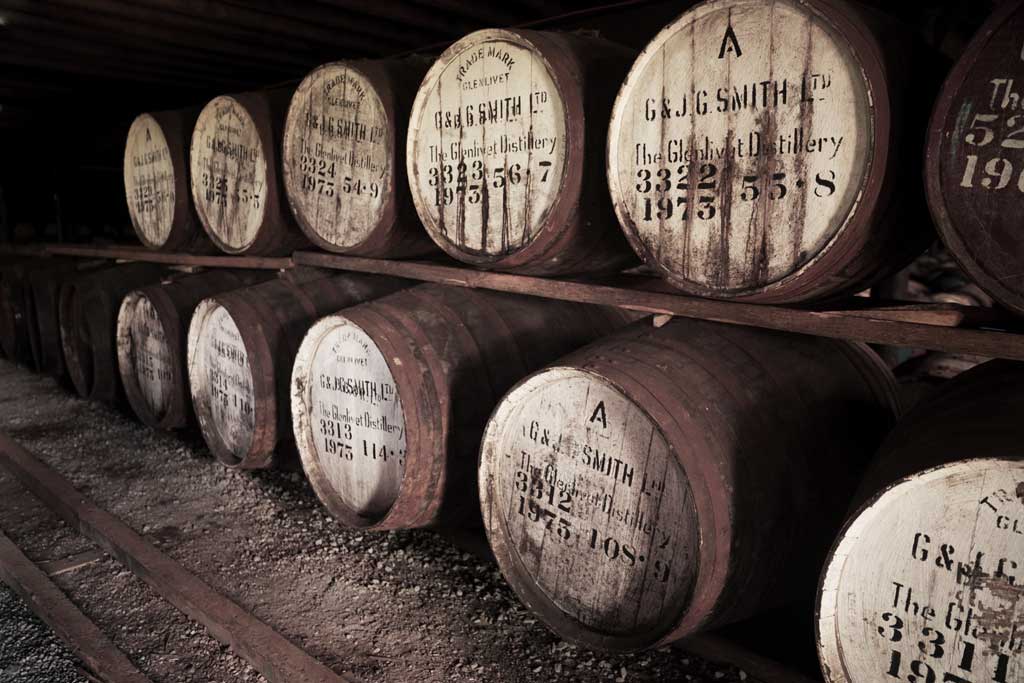
Why Does Scotch Get Better With Age?
Inside a wooden cask, Scotch whisky goes through multiple transitions which affect its colour, flavour, complexity and smoothness. In the initial stages, harshness is absorbed by the cask whilst adding new and more complex flavours to the new make spirit. Over time, these flavours develop as the spirit makes contact with the interior surface of the vessel.
In a more technical sense, these reactions are described as subtractive, interactive and additive maturation where the spirit becomes more refined, complex and smoother to drink.
However, it’s worth mentioning that the longer the whisky is matured, the more whisky is lost to evaporation – a natural phenomenon called angle’s share. Furthermore, certain spirit/cask combinations are better suited to shorter maturation periods whilst others are more conducive for much longer periods.
As a rule of thumb, whiskies reach their peak between 9 to 18 years old, but this depends on many factors such as distillation character, cask material and cask size. Young whiskies can be incredibly smooth for their age, so there’s no rule that proves the typical adage of ‘the older, the better’.
If you’re new to whisky, a great way to experience the effects of ageing is to visit distilleries and sample their differently aged expressions. With the help of a experienced distillery expert, you’ll get a much greater idea of how much a whisky can change during maturation.
Does Scotch have to be 12 years old?
No, Scotch doesn’t have to be 12 years old. Whether a whisky is a single malt or a blend, the minimum age requirement is three years and one day for the youngest whisky in the bottle. More often than not, most whiskies are matured longer than this legal minimum to produce a smoother, more complex spirit.
As a side note, most single malts are made with whiskies from multiple casks. (Unless it’s a single cask whisky.) For consistency in flavour and colour, distilleries regularly ‘marry’ differently aged whiskies. The youngest whisky in the bottle is what determines its age statement.
If a whisky has no age statement (NAS), it could be made from a variety of single malts of different ages, the youngest being three years old.
Where Does Speyside Scotch Come From?
Speyside is a region in Scotland’s North East Highlands. It’s known for its mild climate and gentle hills, which make it an ideal place to grow barley.
Most people picture Speyside when they think of Scotch whisky, thanks to the region’s most famous distilleries: Macallan, Glenfiddich, Aberlour, Chivas Regal, and The Glenlivet.
What are the 6 main regions of scotch?
Scotland has 6 main regions where it produces whisky:
- Campbeltown
- Highlands
- Lowlands
- Speyside
- Islands
- Islay
Each region has its own distinct personality and taste profile. Even subtle differences in the air, or the soil that the barley is grown in can have a significant impact on the complexities of regional Scotch whiskies.
Campbeltown scotch.
Campbeltown is known for dry, potent scotch that often has a sharp bite and a smoky flavour profile. Its most renowned whiskies are Glengyle and Springbank. The region is relatively small, despite being a part of Scotland’s mainland.
It has only a few distilleries, all of which craft scotch just as distinct from one another as the Macallan and Glenlivet whiskies in Speyside.
Scotch from the Highlands.
In the Highlands, the whiskies tend to be more full bodied. The richer, oftentimes sweeter flavour of scotches like Dalmore and Glenmorangie are characteristic of the land spanning from Thurso to Glasgow. Unsurprisingly, this region also boasts a diversity of flavours. No two are alike!
Scotch from the Lowlands.
The Lowlands in Scotland include Edinburg, up to the border of the Highlands at Glasgow. It produces whisky that’s known to be light and easy to go down, with very little peat.
Scotch from Speyside.
Speyside is known for its diverse range of flavours. It’s also the most famous of all the whisky regions in Scotland—particularly Macallan and Glenlivet. But Glenfiddich is another well known scotch from this area.
It has over 60 distilleries that all produce complex whiskies with completely unique flavour profiles, but the most commonly enjoyed flavour notes are fruit, spice, malt, and vanilla.
What makes Speyside Scotch special?
Speyside scotches feature a wide array of nuanced flavours, as compared to brews from other whisky regions in Scotland. The first distilleries opened there in the 18th century, and they’ve been producing some truly outstanding single malts ever since.
Of course, you already know that Speyside Scotch has a smooth taste that you’re sure to enjoy—but what’s not so obvious are all the reasons why this region is such a special place for making single malt:
The water comes from local springs that run through peaty soil, giving it a distinct flavour;
The land surrounding Speyside also provides ideal conditions for growing barley.
The oak barrels used by many of these distilleries give their whiskies an extra layer of complexity as they age.
Speyside Scotch Flavour Profiles
Speyside is a region in the Highlands of Scotland. It’s known for its smooth taste, as well as being home to some of the world’s most prestigious distilleries.
The distillers who make whisky in this area use barley from Speyside farms, which draw most of the nutrients for their soil from the river Spey.
This barley is responsible for some of Scotland’s finest malts—and it’s also why you may have heard comments like “buttery”, “creamy”, and “smooth” when describing Scotch whisky made in Speyside.
What Can You Mix with Macallan?
The bold, rich flavour profile of Macallan scotch makes it perfect for traditional cocktails like the Old Fashioned. On this token, Macallen mixes well with citrus flavours like orange or lemon.
But it will also do nicely with the deeper, sweeter flavours of honey, and even colas.
Macallan is a great candidate for making anything from whisky sours to hot toddies. You can even mix it with other dark liquors like Drambuie, which has notes of honey and spice.
Foodwise, Macallan pairs well with mature cheddar cheese because both have hints of sweetness that cut through the saltiness of each other’s flavour profile.
What Mixes Well with Glenlivet?
Glenlivet pairs nicely roasted macadamia nuts since they share similar woodsy notes that complement each other well. As a result, it tends to go well with honey like Macallan.
But unlike Macallan, this scotch is great for fruiter, sweeter, and more vibrant cocktails.
Try it in a Mai Tai, or in a light cocktail with watermelon. It makes a great dessert cocktail if you mix it with coffee, too.
If you like to keep things simple, then we recommend mixing it with sparkling water or ginger ale instead of a dark cola.


